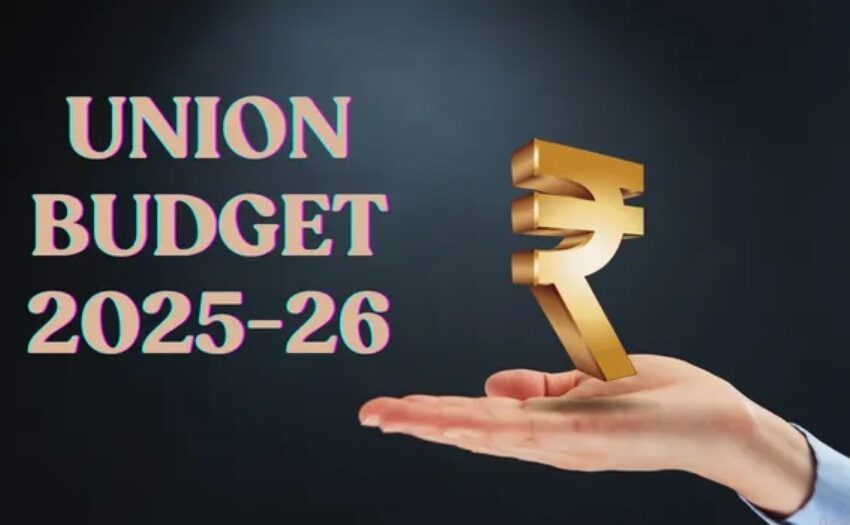
Union Budget 2025-26: A New Strategy to Fuel Economic Growth
The finance minister, Nirmala Sitharaman, has presented the first full-fledged budget of the Modi 3.0 government. The 2025-26 budget has been presented amidst two big concerns.
the growing uncertainty in the global economy and hence in the export sector, and a slowdown in the economic growth rate in the last few quarters of the current fiscal year. Additionally, there has been an emergent perception among the Indian middle class that their disposable income is on the decline on account of persistent inflation during the post-Covid period. The current budget attempts to counter these challenges by following a new approach where it attempts to balance the short-term, medium-term, and long-term interests of the Indian economy.
One of the hallmarks of the Modi 2.0 government has been its consistent focus on getting India’s hard infrastructure in place to improve the productive capacity of the Indian economy. The government has steadily increased public investment in infrastructure to drive economic growth and improve supply in the economy. The effective capital expenditure of the central government has grown at a tremendous speed over the last few years. It has increased from Rs 6.4 lakh crore in 2020-21 to Rs 15.5 lakh crore in 2025-26. It is noteworthy that the rate of growth in effective capital expenditure has been substantially higher than that of total expenditure and the GDP over the last few years. As a result, its shares in total expenditure and the GDP have increased significantly from 18.2 percent and 3.2 percent in 2020-21 to 30.6 percent and 4.3 percent in 2025-26, respectively.
Although both components of effective capital expenditurehave experienced notable growth since 2020-21, as can be seen from the graph below, the rise in capital expenditure has been more substantial compared to that of grants in aid for the creation of capital assets. These expenditures have not only led to a significant improvement in India’s infrastructure landscape, especially in the road and railways sectors, but also contributed to the higher level of economic growth in the recent past.
However, the 2025-26 budget has shifted the focus more towards the demand side of the economy. This change is mainly to address the growth challenge in the short run. The budget’s proposal to make the annual income up to Rs. 12 lakhs (Rs. 12.75 lakhs for the salaried class) tax-free, compared to the existing tax-free income slab of seven lakh rupees, is a big move. The proposed change is estimated to leave about one lakh crore rupees in the hands of Indian middle and lower middle classes. This would translate into higher household consumption, saving, and investment, and in turn should lead to a significant boost to India’s economic growth.
Moreover, the 2025-26 budget does not dilute its focus on improving the productive capacity of the economy. The effective capital expenditure for the upcoming financial year is proposed to be Rs. 15.5 lakh crores, which is 17.4 percent higher than the revised estimate and 3.1 percent more than the budget estimate of 2024-25. More importantly, the current budget also attempts to address the long-term interest of the economy. It allocates a significantly higher amount of money to the departments related to science and technology. The budget proposes to spend a whopping amount of Rs. 55.7 thousand crores on the scientific departments, which is 87 percent higher than the revised estimate and about 70 percent more than the budget estimate of expenditure to the same departments in 2024-25. In this context, it’s pertinent to note that the government seems to be cognizant of the growing importance of artificial intelligence (AI) in India’s economy. The current budget has allocated a handsome amount of Rs 2,000 crore to the IndiaAI Mission, which is substantially higher than the budgetary allocation of Rs. 551.75 crores in 2024-25. The objective of the mission is to create a robust AI ecosystem through strategic schemes and collaborations between public and private sectors.
Overall, the first full-fledged budget of the Modi 3.0 government is well balanced. While all the union budgets presented during the post-COVID era largely focused on the supply side of the economy, the current budget has paid adequate attention to the demand side as well. Since the 2025-26 budget has left a substantial amount of money in the hands of Indian consumers without diluting its focus on capital expenditure, the economy is likely to improve its growth trajectory both in the near and medium terms. Additionally, the notable increase in budgetary allocation to scientific departments will likely augur well for the long-term growth of the Indian economy.



